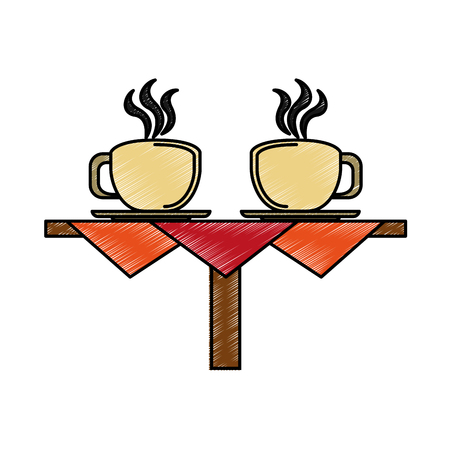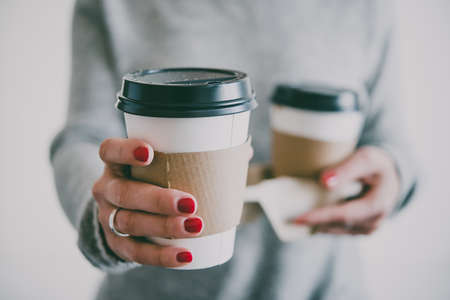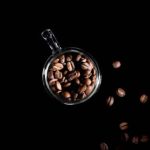Introduction to Scandinavian Coffee Culture
Scandinavia—made up of Sweden, Norway, and Denmark—is known not only for its stunning landscapes and minimalist design but also for its deep-rooted coffee culture. In fact, these countries consistently rank among the top coffee consumers per capita in the world. But what makes coffee so important to daily life in this part of the world?
The Role of Coffee in Everyday Life
In Scandinavia, coffee is more than just a beverage—its a social ritual and an essential part of daily routines. Whether its catching up with friends, taking a break at work, or enjoying a quiet moment alone, coffee plays a central role.
Fika: The Swedish Coffee Break
One of the most well-known traditions is fika, a Swedish practice that involves taking time out during the day to enjoy coffee and pastries with others. Its more than just a coffee break; it’s about slowing down and connecting with people.
Kaffepause in Norway and Hygge in Denmark
Norwegians have their own version called kaffepause, which often takes place mid-morning or mid-afternoon. Danes incorporate coffee into their concept of hygge, which means creating a cozy atmosphere and enjoying lifes simple pleasures—often with a warm cup of coffee in hand.
Coffee Consumption Across Scandinavia
Scandinavian countries are known for their high coffee consumption. Heres a quick look at how much coffee people typically drink per person each year:
| Country | Average Annual Coffee Consumption (kg per person) |
|---|---|
| Finland* | 12 kg |
| Norway | 9.9 kg |
| Iceland* | 9 kg |
| Denmark | 8.7 kg |
| Sweden | 8.2 kg |
*Note: While Finland and Iceland are not always considered part of “Scandinavia” in the strictest sense, they share many cultural similarities when it comes to coffee habits.
Coffee as a Social Connector
Coffee gatherings are common across all age groups and settings—from family get-togethers to workplace meetings. Rather than grabbing a quick cup to-go, Scandinavians often prefer to sit down and savor their brew together, reinforcing strong social bonds.
A Look Ahead
This shared love for coffee sets the stage for understanding how brewing preferences reflect regional tastes and values. In the next section, we’ll dive deeper into the types of brewing methods favored across Scandinavian homes and cafés.
2. The Concept of Fika: More Than Just a Coffee Break
In Sweden, coffee is more than just a caffeine fix—its a daily ritual rooted in culture and connection. This ritual is called Fika, and it goes far beyond grabbing a quick cup of joe. Fika is about slowing down, taking a break, and enjoying the moment with friends, family, or coworkers over coffee and something sweet.
What Is Fika?
Fika (pronounced “fee-kah”) is both a noun and a verb in Swedish culture. It typically involves drinking coffee along with pastries like cinnamon buns (kanelbullar), cookies, or cakes. But more importantly, its about making time to pause your day, relax, and connect with others. In many Swedish workplaces, Fika is even scheduled into the day as an essential part of work-life balance.
Cultural Importance of Fika
Fika is deeply embedded in the Scandinavian approach to life—one that values simplicity, mindfulness, and human connection. It reflects the region’s emphasis on lagom, a Swedish word that means “just the right amount.” Fika encourages people to find balance—not too busy, not too relaxed—and to make space for social interaction in everyday life.
Common Elements of a Traditional Fika
| Element | Description |
|---|---|
| Coffee | Usually brewed using drip methods or an automatic coffee maker; strong but smooth flavor. |
| Pastry | Cinnamon buns (kanelbullar) are the most iconic choice, but cookies and cakes are also popular. |
| Company | A key part of Fika is sharing it with others—colleagues, friends, or family members. |
| Time | Typically happens mid-morning and/or mid-afternoon; not rushed. |
Fika Etiquette: How It’s Done in Sweden
If youre visiting Sweden or spending time with Swedes, joining in on Fika is a great way to bond. Here are some unwritten rules:
- Don’t rush: Fika is about taking your time. It’s not meant to be eaten or drunk on the go.
- No phones at the table: Being present is key during Fika; its about real conversations.
- Contribute if you can: In casual settings, its common for people to bring homemade treats or take turns hosting.
The Role of Coffee in Scandinavian Social Life
Coffee consumption in Scandinavia ranks among the highest in the world—and much of that comes from traditions like Fika. Its not unusual for Swedes to enjoy several cups of coffee each day as part of their routine. Unlike American coffee culture that often favors speed and takeaway options, Scandinavian coffee culture leans toward quality time and meaningful interaction.
Comparison: American vs. Scandinavian Coffee Breaks
| Aspect | American Coffee Break | Scandinavian Fika |
|---|---|---|
| Pace | Fast-paced, often taken alone or while multitasking | Savored slowly, usually shared with others |
| Beverage Style | Larger servings (e.g., lattes), often flavored or iced | Straightforward black coffee, smaller portions |
| Main Purpose | Caffeine boost to keep going | A social ritual for connection and balance |
Whether youre in Stockholm or Seattle, embracing the spirit of Fika can add a touch of mindfulness and warmth to your daily routine. It’s not just about the brew—it’s about taking time for what really matters: good company and meaningful conversation.

3. Popular Brewing Methods in Scandinavia
Scandinavians take their coffee seriously, and that passion is reflected in the way they brew it. Whether at home or in a cozy café, brewing methods tend to focus on simplicity, clarity of flavor, and tradition. Let’s explore some of the most popular ways coffee is prepared across countries like Sweden, Norway, and Denmark.
Pour-Over (Hand-Brewed Coffee)
The pour-over method is a staple in many Scandinavian homes and specialty cafés. Known for producing a clean, bright cup of coffee, this method aligns with the region’s preference for lighter roasts that highlight nuanced flavors. Common devices include the Hario V60 and Chemex, both of which allow full control over brewing time and water temperature.
Why Scandinavians Love It:
- Emphasizes clarity and delicate flavor notes
- Minimal equipment required
- Perfect for single cups or small servings
French Press (Presskanna)
The French press—often called “presskanna” in Swedish—is another beloved brewing method. Its especially popular for its rich body and full flavor. This method involves steeping coarsely ground coffee in hot water before pressing down a metal filter to separate the grounds.
Benefits:
- Full-bodied, bold taste
- Great for sharing multiple cups
- Easy to use without electricity
Kokekaffe (Boiled Coffee)
Kokekaffe is a traditional Scandinavian brewing technique that dates back centuries. Most commonly used in Norway, it involves boiling coarse coffee grounds directly in a pot of water, then letting the grounds settle before serving. Its often brewed outdoors during hikes or camping trips—making it more than just a drink, but part of an experience.
When Its Used:
- Outdoor gatherings and cabin trips
- Special occasions or nostalgic moments
- When simplicity and tradition matter most
Quick Comparison of Brewing Methods
| Brewing Method | Main Characteristics | Coffee Flavor Profile | Common Use |
|---|---|---|---|
| Pour-Over | Manual, slow-pour over filter | Clean, bright, complex notes | Home & specialty cafés |
| French Press | Immersion with metal filter press | Rich, bold, full-bodied | Everyday home use |
| Kokekaffe | Boiled in pot; no filter needed | Smooth, earthy, traditional taste | Outdoors & cultural rituals |
No matter which method is used, Scandinavian coffee culture places great value on quality beans and thoughtful preparation. These brewing styles reflect the region’s love for simple pleasures shared among friends and family.
4. Taste Preferences and Roast Profiles
When diving into Scandinavian coffee culture, one of the most distinctive features is their preference for lighter roast profiles. Unlike the darker, more robust coffees often favored in the United States, Scandinavians typically enjoy a brighter and more delicate cup. This taste preference reflects both their brewing methods and cultural attitude toward coffee as a daily ritual rather than just a caffeine boost.
Light roasts are known for preserving the natural flavors of the coffee bean. In Scandinavia, especially in countries like Sweden, Norway, and Denmark, coffee lovers seek out beans that offer subtle fruity notes, floral aromas, and a clean finish. These flavor characteristics are often achieved through careful sourcing of high-quality beans and precise roasting techniques that highlight origin-specific nuances.
In contrast, American coffee drinkers often lean toward medium to dark roasts, which produce bolder, richer flavors with more bitterness and body. These roasts are also more forgiving when paired with milk or sugar—common add-ins in American-style coffee drinks.
Flavor Profile Comparison: Scandinavian vs. American Preferences
| Aspect | Scandinavian Coffee | American Coffee |
|---|---|---|
| Roast Level | Light | Medium to Dark |
| Main Flavor Notes | Fruity, floral, acidic | Chocolatey, nutty, smoky |
| Mouthfeel | Clean and crisp | Full-bodied and bold |
| Common Brewing Style | Pour-over (e.g., V60), Aeropress | Drip coffee maker, espresso-based drinks |
| Additives | Rarely added (enjoyed black) | Often includes milk or sugar |
This difference in taste isnt just about personal preference—it’s deeply tied to tradition and lifestyle. In Scandinavia, coffee breaks (known as “fika” in Sweden) are moments of calm connection, where the quality of the brew matters as much as the conversation. The lighter roasts align with this philosophy by offering complexity without heaviness. For Americans accustomed to stronger brews or sweetened lattes on-the-go, Scandinavian-style coffee may be a refreshing shift toward appreciating subtlety in each cup.
If youre curious to explore these Nordic flavors yourself, start with single-origin light roast beans from Ethiopia or Kenya brewed using a pour-over method. It’s a simple way to experience how less can truly be more when it comes to flavor.
5. Influence on the Global Coffee Scene
Scandinavian coffee culture has made a big splash in the global coffee world. While each Nordic country has its own traditions, their shared love for simplicity, quality, and sustainability has inspired cafés and roasters around the world. From minimalistic café interiors to eco-friendly sourcing and brewing methods that slow things down, lets explore how these northern countries are shaping how we drink coffee today.
Minimalist Café Design
Scandinavian design is known for being clean, functional, and cozy—often described by the Swedish word “lagom,” meaning “just the right amount.” This design approach has influenced specialty cafés across the U.S., where you’ll now find more open spaces, natural lighting, wooden accents, and simple furniture that puts the focus on the coffee itself.
Key Features of Scandinavian-Inspired Cafés
| Design Element | Description |
|---|---|
| Neutral Colors | Soft tones like white, gray, and beige create a calm atmosphere |
| Natural Materials | Wood, stone, and metal for a warm yet modern feel |
| Open Layouts | Spacious interiors with minimal clutter |
| Functional Furniture | Simple but comfortable seating with clean lines |
Sustainable Sourcing Practices
Scandinavian roasters are leaders in ethical sourcing. They often work directly with farmers to ensure fair wages and high-quality beans. This transparency has caught on globally. Many American specialty roasters now highlight their direct trade relationships and efforts to reduce environmental impact.
Sustainability Focus Areas
- Direct trade partnerships with farmers
- Organic and shade-grown coffee beans
- Eco-friendly packaging materials
The Slow Coffee Movement
The idea of “slow coffee” is all about taking time to enjoy the process—from grinding fresh beans to brewing one cup at a time. Scandinavians value this mindful approach, favoring manual brew methods like pour-over, AeroPress, and French press over quick espresso-based drinks. This trend encourages people to connect with their coffee and appreciate its flavors more deeply.
Popular Manual Brewing Methods in Scandinavia
| Method | Description |
|---|---|
| Pour-Over (e.g., V60) | Crisp and clean flavor; highlights bean characteristics |
| AeroPress | Rich body; great for experimenting with flavors |
| French Press | Bolder taste; retains natural oils from the coffee grounds |
This slower style of coffee drinking has become popular in many American cities where people seek out quality over convenience. More cafés now offer single-origin beans brewed to order using these Scandinavian-preferred methods.


